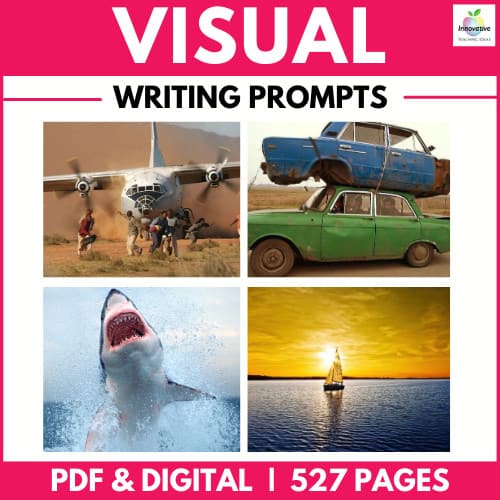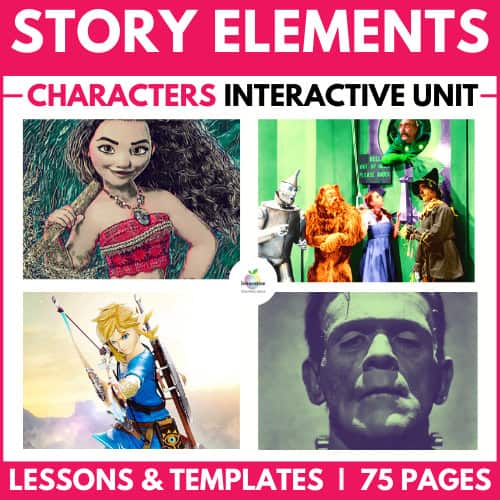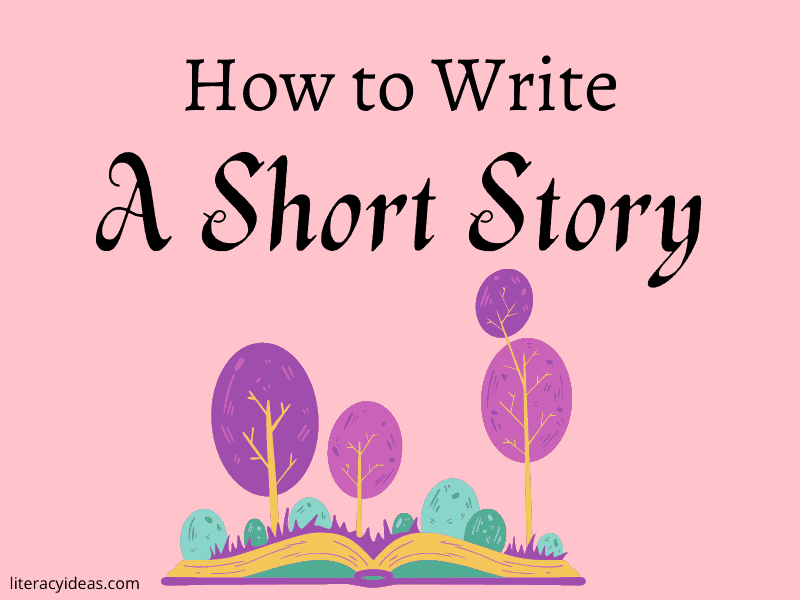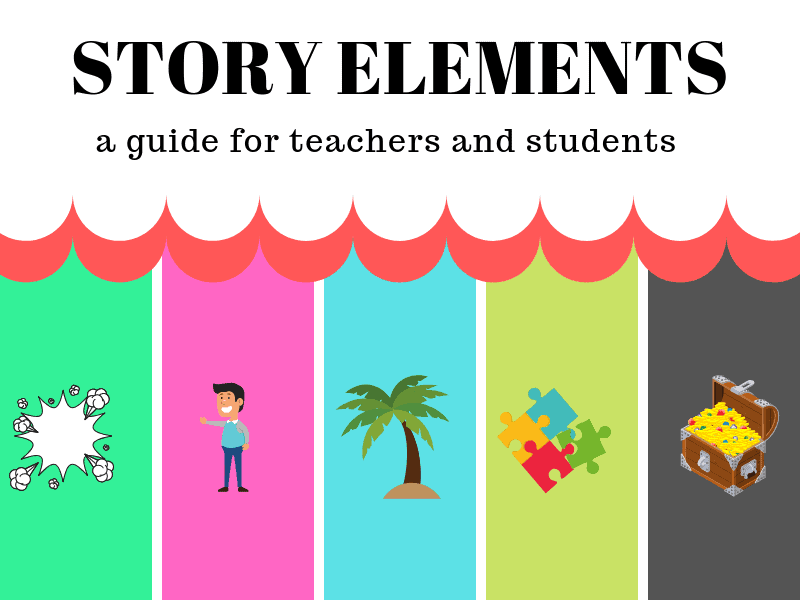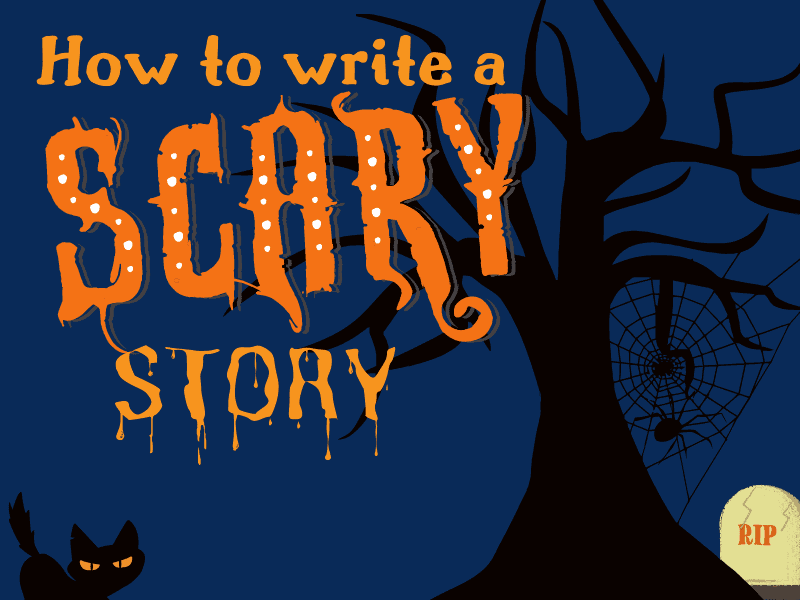
How to write a scary story in 5 Easy Steps
Most of us love a good scare!
From our first game of peek-a-boo as a child through those ghost stories around a campfire as a teen, surprises and a little fright never lose their appeal. It’s why horror movies remain big business at the box office and on streaming websites.
- Even those who profess not to read much will likely have read a Stephen King book or two.
- Gamers aren’t immune either, as the popularity of games such as Resident Evil and Silent Hills will attest.
- Horror is one of the best-selling fiction genres in any medium.
In this article, we’ll look at spine-chilling tips to help students write spooky stories that will rattle readers to their core. If scary is not your thing, then check out our complete guide to writing a narrative here.
So, pull the curtains, dim the lights and let’s learn how to write a horror story for school.
1. Write about what scares you.

The old writer’s mantra states, ‘write about what you know. While it’s most unlikely that your students know any killer clowns or lunatic killers who haunt campsites frequented by teenage couples, they can still write about the things that scare them.
This is the best place to start. A student has little hope of frightening the reader unless they choose to write about something they find disturbing.
The more specific the subject, the more personal the writing can become. Horror is filled with tropes and cliches. The world doesn’t need another axe murder chasing teens through the woods or another foolhardy ouija board misadventure – unless there’s a new spin put on things.
Avoiding tired clichés like those mentioned above will help maintain the element of surprise in the writing, which, as we shall see more of later, is essential to keep readers engaged.
Teaching Activity: Ask students to write down a list of the top 3 things that scare them. They needn’t be things that other people are scared of; the more personal and idiosyncratic they are, the more original the story is likely to be. These could be anything from a fear of heights or open spaces to a fear of the doorbell ringing at night.
Now, ask the students to choose one of these fears and list why they are scared of it. They should also write about how their fear makes them feel. The more detailed they can write about this, the better.
Encourage the students to use their full five senses to describe the feelings and emotions they would experience. The more convincingly they can convey the experience, the more successful they’ll be in striking fear into the hearts of their readers later on.
2. Use Setting to Your Advantage when writing a Horror story

The setting is a crucial element to any story and when used skillfully, it can be an essential tool in raising the scare factor of any tale.
When asked to write a scary story, younger kids will inevitably gravitate towards the more apparent settings such as haunted houses, cemeteries, and dark woods. Again, these well-worn settings would best be avoided unless the student intends to subvert a reader’s expectations.
In fact, given that surprise is one of the key elements to any good scare, subverting the setting is one great tool for terror available to our students.
For example, the comfort of a sleepover at their grandmother’s can take a turn for the worse if it’s discovered she holds a Black Mass. Imagine a coven of devil-worshippers in the dead of night in that dated living room where she serves milk and cookies to her grandkids during the day. Enough to make you spill your glass of milk over the embroidered cushions!
The physical environment can also be used to create tension and fear. For example, imagine two siblings hiding in a cupboard witnessing Grandmother’s midnight Satanic shenanigans. It’s hot and cramped. Imagine the claustrophobic feeling coupled with the terror of discovery. It’s enough to make you want to skip that Sunday visit to Grandma’s entirely [shudder].
If you are going to teach students how to write a scary story about a haunted house ensure you show them examples of figurative language that gives the house character.
Teaching Activity: Ask your students to take the fear they identified in the first activity and devise a setting for a story based on that fear.
One novel approach for deciding on a setting is to choose the place that seems least likely for a horror story. This unlikely element is one of the reasons why clowns are extraordinarily creepy or why the child’s doll in the Chucky movies is so unnervingly terrifying.
Not only will this build strength in the student’s creative writing muscles, but it will also help ensure a crucial element of originality in the finished story. The setting should be painted as vividly as possible to create a picture in the reader’s mind. The clearer that picture, the more intense the fear created.
Remember, too, the setting consists of both time and place, so students shouldn’t be afraid to experiment with historical and future settings for their stories too.

3. Choose your character and point of view wisely when writing a horror story
One of the most common areas horror stories fall down in is that of characterization. Poor characterization is the number one reason many scary stories and movies fall as flat as the characters they utilize.
If your student wants to take their reader on a real knuckle-whitening ride of terror, they have to make the effort to bring their characters to life. An effective strategy to help students bring characters to life on the page is to have them base them on real people.
These real people could be people they know personally, people they’ve heard about in their community or beyond, or even pre-existing fictional characters they are already familiar with. Students should, of course, make the necessary modifications to make sure they are not committing either defamation or plagiarism.
At a more advanced level, students may also consider creating a composite character that brings together various aspects of different characters (real or fictional) that they already know.
Once students have gathered together their cast of characters, they’ll need to decide on a point of view from which to tell the story. Generally, this will be a first or third-person POV, and though the advantages and disadvantages of each type are too complex to go into here, you can find out more about different POVs in other articles on this site.
That said, some general points to consider when choosing a POV for a horror story are that while the first-person POV is great for grabbing the reader’s attention from the outset and for building suspense when the story is in the past tense, it may ruin any suspense regarding whether the narrator survives or not.
Third-person narratives allow for a slower build to a story while maintaining the suspense concerning the outcome for the story’s protagonist. They also allow for the more detailed narration and description demanded by longer stories.
One more point for students to consider is whether the narrator is reliable or not, If they opt for an unreliable narrator, this can open up great opportunities for a final twist in the tale. The 90’s movie The Usual Suspects is a great example of the unreliable narrator at work where the climactic twist at the end reveals the real Keyser Söze.
Teaching Activity: For this activity, students should select a scene to rewrite from a fiction book they are already familiar with. A book a few levels below their current reading level will be perfect.
Students rewrite the scene from first and third-person limited and omniscient perspectives, as well as from the points of view of different characters in the story. More advanced students can even play with using a reliable and unreliable narrator if they’ve already grasped these concepts.
When students have written the different versions of the scene, they should take time to compare the effects of these different points of view. Ask them to identify which of the perspectives and points of view worked best for this particular scene and story. What were the specific advantages and disadvantages of each version?
Year Long Inference Based Writing Activities
Tap into the power of imagery in your classroom to master INFERENCE as AUTHORS and CRITICAL THINKERS.
⭐⭐⭐⭐⭐ (26 Reviews)
This YEAR-LONG 500+ PAGE unit is packed with robust opportunities for your students to develop the critical skill of inference through fun imagery, powerful thinking tools, and graphic organizers.
4. Lay It all on the line when writing a scary story

Like the card game poker, it is when the stakes are highest that horror stories are at their most exhilarating.
In the world of stories, these stakes are directly related to the central problem and character motivation. The broad appeal of horror stories lies in the universality of these motivations.
Ensure students understand this and reflect this knowledge in their writing. There are several different types of ‘stake’ they can use to amp up the reader’s interest. Let’s take a look at 2 of the most common motivations in this genre:
The Survival Motivation: This is the most primitive of the 3. Not wanting to die is something we can all relate to and needs no explanation. However, this motivation can be further enhanced by adding another layer for the character. For example, if the protagonist needs to survive to defeat the monster etc, then the need to survive is emphasized beyond just the preservation of life.
The Protection Motivation: Here, the protagonist’s prime motivation is the need to protect others from a threat, usually in the form of loved ones such as family or a lover. Again, this is a primitive desire that we can all relate to and needs little in the way of explanation for the reader. There are two main ways to increase the stakes for this motivation – increase the number of people’s lives on the line or reveal a deep relationship between the protector and the protected.
Teaching Activity: Organize students into small groups. Have them look at a list of horror movies, such as those on an online database like IMDb, and then sort the movies into two categories: Survival Motivation or Protection Motivation.
There may be some crossover as many movies will employ both motivations to enhance the drama. In such cases, students should focus on the prime motivation of the movie’s protagonist. Where there’s disagreement, a discussion can be had as a whole class at the end.
When they have completed this activity, students should then look at their notes from the previous activities described above. What motivation is best suited to their embryonic story? Students should write a few lines to explain.

5. Avoid Clichés in horror writing
There are arguably more familiar tropes and clichés associated with this genre of story-telling than any other. For our student writers, these should be avoided. Clichés and overused tropes result in dull and predictable storylines. These are the opposite of the elements such as surprise and shock, which good horror so often relies on.
The one exception is when the writer takes well-worn plotlines and characters and subverts them to come up with something new, which leads us directly to our next activity.
Teaching Activity: Organize the students into small groups again and challenge them to make a list of clichés and tropes from horror books and movies. The IMDb movie database will again serve well if they need some inspiration. Even if they don’t know the movies, they can read the synopses and identify some of the clichés and tropes used.
Once students have their list, they should attempt to make something fresh from them. The simplest way to do this is often to change the setting or characters. This will lead to unusual ideas, such as vampires in space or piranhas in the city sewage system.
The ideas generated need not be plausible or even ‘good’. This activity aims to flex the students’ creativity muscles in pursuit of something original.
The Final Bell Tolls
So there we have it. Five tips to help students hone their horror-writing skills and five activities to put that newly-gained knowledge into practice.
Writing spooky stories is a great way to get reluctant students to write at Halloween and any time of the year.
Though writing spooky stories is fun, students still gain opportunities to internalize literature’s essential elements and develop their understanding of how language, structure, and story work.
Not bad for a night’s work…
Now go and write one, and be sure to read our complete guide to writing narratives if you need any further guidance on story writing.
A COMPLETE UNIT ON TEACHING STORY ELEMENTS
SIMILAR ARTICLES TO HOW TO WRITE A SCARY STORY



